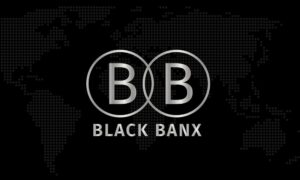In an era where digital transformation is reshaping every aspect of life, the domain of personal finance is not untouched. High-yield savings accounts (HYSAs), a cornerstone of personal savings strategies, are undergoing significant changes due to technological advancements. This evolution is not just a matter of convenience; it marks a paradigm shift in how individuals approach saving and investing. The integration of technology in banking has revolutionized the traditional concept of saving, making it more accessible, efficient, and tailored to individual needs.
HYSAs have historically offered a safe haven for savers, providing a blend of relatively higher interest rates and security compared to standard savings accounts. However, the landscape of these accounts has been altered drastically with the advent of online banking and fintech solutions. This shift has not only changed the way these accounts operate but has also influenced consumer expectations and preferences.
As we delve into this topic, we will explore three key areas: the impact of digital banking on HYSAs, the changing nature of consumer interaction with these accounts, and the emerging trends that are setting the course for the future of high-yield savings.
The Digital Banking Revolution
The first and perhaps most significant change in the realm of HYSAs has been brought about by the rise of digital banking. Online-only banks have emerged as strong competitors to traditional brick-and-mortar institutions, primarily due to their ability to offer higher interest rates. These banks operate with lower overhead costs, allowing them to pass the savings onto customers in the form of better rates. This shift has compelled traditional banks to adapt, leading to a more competitive landscape for HYSAs.
Moreover, digital banking has introduced a new level of convenience and accessibility. Customers can now open and manage their accounts from anywhere, at any time, without the need to visit a physical branch. This ease of access has been a game-changer for tech-savvy savers who prefer online transactions over traditional banking methods.
However, this shift to digital has also brought challenges, particularly in terms of cybersecurity. As more financial transactions move online, the risk of data breaches and fraud increases. Banks and financial institutions are continuously working on improving security measures to protect customer data and maintain trust in digital banking platforms.
Changing Consumer Interactions
The second point of discussion centers around how consumer interactions with HYSAs have evolved. In the past, personal banking was characterized by in-person interactions and paper-based transactions. Today, the process is predominantly digital, with mobile apps and online platforms being the primary touchpoints. This change has led to a more dynamic and responsive banking experience, where customers have real-time access to their account information and can make decisions on the go.
The role of customer support has also transformed. While face-to-face interactions have decreased, the demand for round-the-clock online customer service has risen. Banks are leveraging chatbots and AI-driven interfaces to provide instant support and enhance the customer experience. This shift reflects a broader trend in consumer behavior, where speed, convenience, and efficiency are highly valued.
Furthermore, digital banking has democratized financial services, making them accessible to a broader audience. People in remote areas or those with limited access to traditional banking services can now easily open and manage high-yield savings accounts, contributing to financial inclusion.
Emerging Trends and Future Outlook
The final point to consider is the emerging trends in HYSAs and what they indicate for the future. One significant trend is the increasing integration of artificial intelligence and machine learning in personal finance. These technologies are being used to offer personalized financial advice, predict savings patterns, and even automate savings based on user behavior. Such advancements could redefine the role of HYSAs in personal finance planning.
Another trend to watch is the growing interest in sustainable and socially responsible banking. Consumers are increasingly aware of the impact of their financial choices and are looking for banks that align with their values. This could lead to the rise of HYSAs that not only offer financial benefits but also contribute to social and environmental causes.
Lastly, the competition in the market for top high yield savings accounts is driving innovation, with banks constantly looking for ways to differentiate their offerings. Features like budgeting tools, reward programs, and tiered interest rates are becoming common, adding more value to the traditional savings account model.
Conclusion
In conclusion, high-yield savings accounts are at a pivotal juncture, influenced heavily by technological advancements and changing consumer behaviors. The digital banking revolution has reshaped the landscape of these accounts, offering greater convenience and competition. As consumer interactions with banks evolve towards a more digital-focused approach, the demand for responsive, user-friendly platforms is on the rise.



































